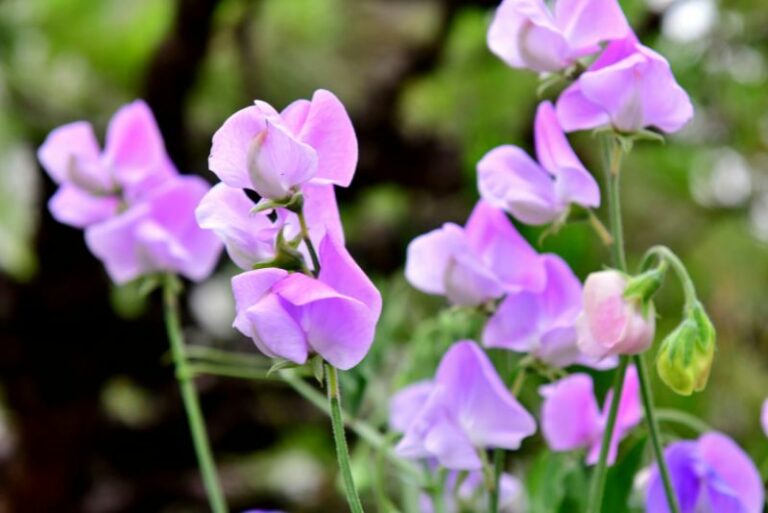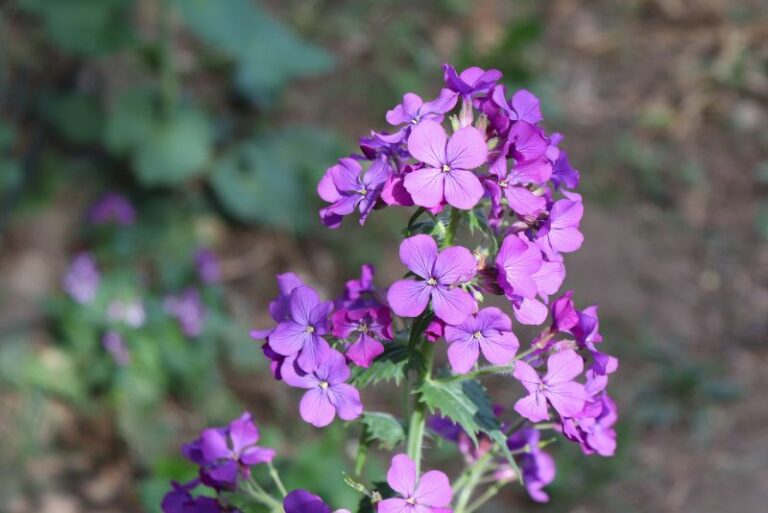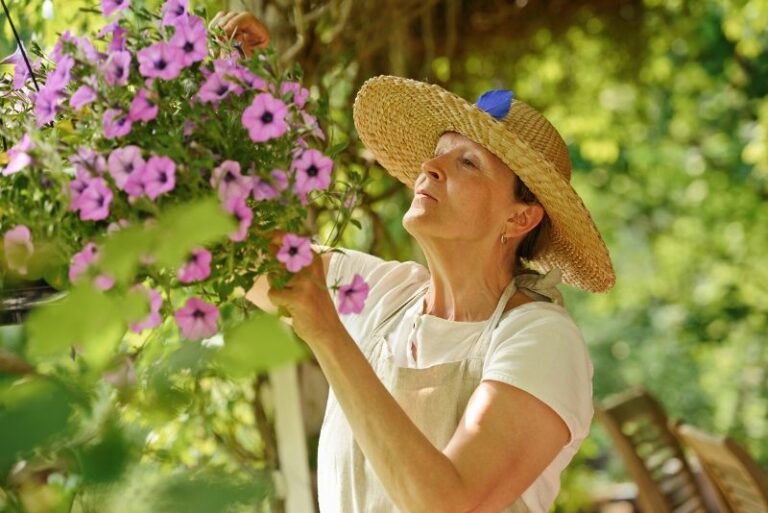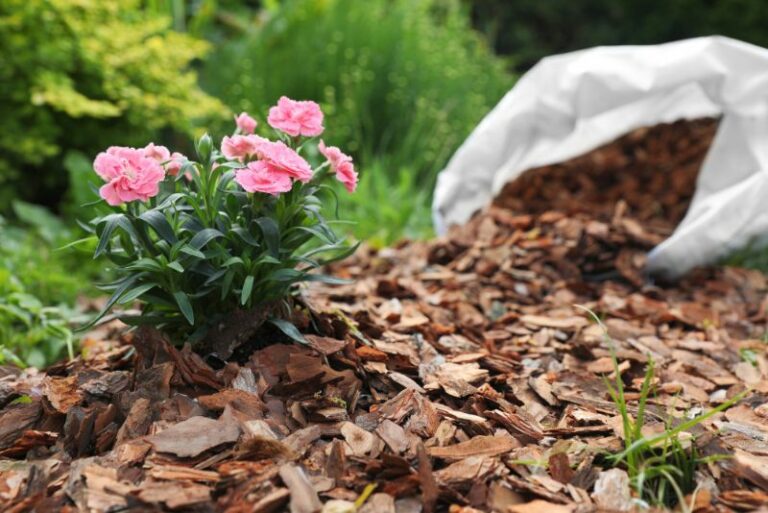How to Plant, Grow and Care For Lupine Flowers
Lupine flowers are a beautiful addition to any garden, with their vibrant colors and unique shape. They are also known for attracting pollinators, making them not only visually appealing but beneficial for the environment as well. In this guide, we will take you through all the steps necessary to plant, grow and care for lupine flowers in your own backyard.
Lupine Flowers Overview
Here’s an overview table for Lupine Flowers:
| Plant Type: Perennial | Maturity Date: 75-90 days after planting | Attracts: Bees, butterflies |
| Season: Spring to Summer | Maintenance: Low | Hardiness Zone: 4-8 |
| Pests: Aphids, slugs | Species: Lupinus perennis | Plant with: Other wildflowers or native grasses |
| Slugs Family: N/A (Not applicable as slugs are not part of the plant’s family) | Growth Rate: Moderate | Planting Depth: 1/8 inch |
| Exposure: Full Sun to Partial Shade | Soil Type: Well-drained, slightly acidic soil | Watering Requirement: Regularly, do not let soil dry out |
| Diseases: Crown rot, mildew | Native Area: North America | Don’t plant with: Plants that prefer alkaline soil |
| Genus: Lupinus | Plant Spacing: 12-18 inches apart | Height: 1-4 feet |
Please note that some information like ‘Slugs Family’ is not applicable to the plant as slugs are pests, not a part of the plant’s taxonomy. The information provided is general and can vary depending on the specific variety of lupine flowers and local growing conditions.
All About Lupine Flowers
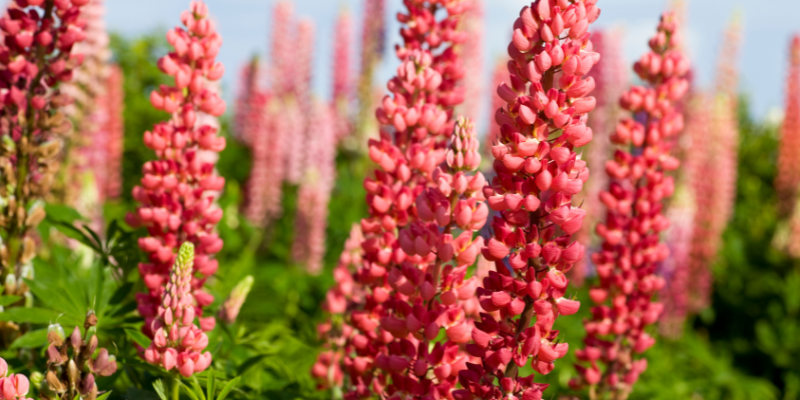
Lupine flowers, or Lupinus, are perennial plants that charm onlookers with their distinct spires of flowers that come in a myriad of colors. They are a part of the legume family, which means they not only decorate the landscape but also enrich the soil in which they grow by fixing nitrogen, improving the soil’s fertility over time. Lupine flowers fare best in cooler climates and typically flourish during late spring to early summer.
When planting lupines, it’s essential to pick a spot that receives full sun to partial shade. They prefer well-draining, slightly acidic to neutral soil. Start by loosening the soil, mixing in some compost if needed, for better moisture retention and nutrient content. Sowing the seeds directly into the ground in the late fall allows them to stratify over the winter and germinate in the spring. Alternatively, if you’re starting off with nursery pots, make sure to plant them at the same depth as the pot to avoid burying the crown of the plant, which can lead to rotting.
Caring for lupine flowers involves regular watering, especially during dry spells, to keep the soil moist but not waterlogged. Mulching can help retain moisture and control weeds that may compete with the plant for nutrients. While lupines are generally resistant to pests, they can be vulnerable to slugs and snails, which can be mitigated with organic deterrents or barriers. As the flowers begin to fade, deadheading can encourage a second bloom and prevent self-seeding if you wish to control their spread in your garden.
For gardeners looking to propagate lupine plants, they can collect seeds from the pods after they’ve turned brown and dry on the plant. Note that lupines can take a few years to establish fully and may not flower in their first year. However, once they’re settled in their spot, they can spread out and fill a garden space with their colorful, bountiful blooms.
Lupine Flowers Varieties
Lupine flowers are a captivating group, offering a diverse range of varieties that differ by size, color, and blooming habits. One of the most famous is the Lupinus polyphyllus, known for its sizeable stately spikes and a wide array of colors. This species was instrumental in the work of George Russell, a horticulturist who developed the ‘Russell hybrids’, a mixture of Lupines renowned for their vibrant colors and horizontal floral habit in the early 20th century.
The ‘Gallery Series’ is another noteworthy variety, bred for shorter stalks approximately 18 inches tall, which makes them less susceptible to wind damage and ideal for smaller gardens or border fronts. Their flowers range from blue and violet to pink and white. Meanwhile, the ‘Minarette’ lives up to its name with slender spires and a slightly more delicate appearance that sways exquisitely in the breeze.
No overview of lupines is complete without mentioning the Lupinus texensis, or the Texas Bluebonnet, which is known for its rich history as the state flower of Texas and for creating breathtaking wild blue carpets during springtime. These have a distinctive appearance with deep blue blooms and white tips.
Aesthetically, lupine flowers often carry a scent that is subtle and rarely overpowering, harmonious with their visual softness and natural grace. In terms of similarities, most lupine flowers exhibit a signature palmate leaf structure, radiating out from a central point like the fingers of a hand, and their bloom spikes that proudly reach upward, making them a striking presence in the garden.
When appreciating lupines, it’s important to note that while they contribute greatly to an ecosystem by fixing nitrogen in the soil as members of the legume family, some varieties, especially those in wilder regions, are toxic if ingested. Thus, they should be planted with care in areas frequented by children and pets.
Lupines continue to enchant gardeners not only with their looks but also with their resilience, ease of care, and environmental benefits, marking them as truly valuable additions to any horticultural pursuit.
Lupine Flowers Care Procedures
Lupines thrive in conditions that mimic their natural habitats—open spaces bathed in sunlight and cooler temperatures. To ensure your lupine flowers flourish, consider the following light and temperature guidelines.
Optimal Light Conditions for Lupine Flowers
Lupine flowers should be sown in areas that receive full sun to part shade to drive their growth and flower production. Full sun, defined as at least six hours of direct sunlight a day, is ideal for most lupine varieties. However, in extremely hot climates or during scorching summer days, their preference shifts towards partial shade, especially during the afternoon when the sun is most intense. Correctly gauging the amount of sunlight your lupines get will result in lush, robust plants with vibrant spikes of flowers.
Temperature Requirements for Healthy Lupines
Being cool-weather plants, lupines generally prefer temperatures that range between 60°F to 75°F (about 16°C to 24°C). They can tolerate light frosts, which makes them suitable for planting in areas with cooler springs and falls. In regions with warmer winters, it’s recommended that lupine seeds be chilled in the refrigerator for a week before planting to simulate winter conditions, thereby promoting germination. During the summer, it is especially important to safeguard lupines from extreme heat; mulching can help keep the root zone cooler, which is crucial for their survival and growth.
Remember, while lupines are somewhat adaptable, they will not tolerate soggy, hot, or shaded conditions for long. Giving them just the right balance of light and temperature significantly contributes to their remarkable appeal in your garden.
Water and Humidity Management for Lupine Flowers
Proper watering is critical to the health of lupine flowers as it prevents both drought stress and root rot. Lupines prefer consistent moisture levels but are susceptible to overwatering, which can lead to fungal diseases.
Watering Lupine Flowers
Initially, after planting, ensure consistent watering to help establish the plants. The ideal watering regimen for lupines involves a deep soak once a week, allowing the water to penetrate the soil and reach the roots, rather than light daily sprinklings, which do not promote strong root growth. During periods of drought or extreme heat, increase watering as necessary but always allow the soil to dry out slightly between waterings.
When irrigating lupines, aim the water at the base of the plant to keep the foliage dry and prevent mildew. Avoid overhead watering, especially in the evening, as this can leave the plants damp overnight and prone to disease. Additionally, if your lupines are in a garden setting, consider using soaker hoses or drip irrigation systems for an efficient and targeted approach to watering.
Humidity Considerations
While lupine flowers do well in areas with moderate humidity, they can struggle in regions with high humidity combined with high temperature. In such climates, providing good air circulation around the plants is essential. Space your lupines adequately and if necessary, thin out dense foliage to facilitate airflow. This practice helps to reduce the humidity level immediately around the plants and can inhibit the growth of mold and mildew.
If you live in an especially humid area, choose lupine varieties that are more resistant to mildew, and be vigilant for signs of stress. At the first sign of mildew, carefully remove affected parts of the plant and consider applying a suitable fungicide, preferably one that is environmentally friendly.
Lupines are beautifully adapted to certain climates, but with appropriate care and attention to their watering and humidity needs, they can thrive in a variety of garden environments, providing a burst of vertical interest and color to any garden ensemble.
Soil Types, pH, and Preparation for Lupine Flowers
Lupine flowers are quite adaptable to various soil types but will thrive best in light, well-drained soils. They favor a slightly acidic to neutral soil pH, generally ranging from 6.0 to 7.0. Below is a detailed guide to managing different soil types, pH levels, and soil preparation to create the ideal environment for your lupine flowers.
Managing Soil Types for Lupines
- Sandy Soil: If you have sandy soil, it will provide excellent drainage which lupines appreciate. However, sandy soil tends to dry out quickly and may lack nutrients. You can improve sandy soil by adding organic matter, such as compost or aged manure, to provide the nutrients that lupines need to flourish.
- Clay Soil: Clay soil, being dense and compact, can retain water for prolonged periods, which might cause root rot in lupines. To improve the condition of clay soil, incorporate organic material and coarse sand to enhance drainage and aeration.
- Loamy Soil: This soil type is ideal for lupines as it offers a balance between moisture retention and drainage. If you are fortunate to have loamy soil, simply maintain it with regular applications of organic compost to keep lupines happy.
Adjusting Soil pH for Lupines
To adjust the soil pH in favor of lupines:
- For Alkaline Soil: If your soil is too alkaline (above pH 7), you can lower the pH by adding sulfur or peat moss to the soil, which will provide a more acidic environment preferred by lupines.
- For Acidic Soil: In case your soil is too acidic (below pH 6), you can raise the pH by incorporating lime into the soil. This is less commonly required for lupines since they prefer slightly acidic conditions.
Conduct a soil test to determine the pH level before making any adjustments. Once amended, retest the pH every year to ensure it remains in the optimal range for lupines.
Preparing the Soil for Lupine Planting
When preparing the soil for lupines, follow these steps:
- Start by Clearing the Area: Remove weeds, rocks, and debris from the planting site.
- Soil Testing: Perform a soil test to determine the pH and soil type. Amend as needed based on the results.
- Tilling: Till the soil to a depth of 12-15 inches (30-38 cm) to loosen and aerate it. If you’re working with heavy clay, this step is crucial for improving drainage.
- Adding Organic Material: Mix in a generous amount of organic matter, such as compost, aged manure, or leaf mold, to provide a rich, fertile growing medium for the lupines.
- Leveling and Watering: After amending, level the soil and give it a thorough watering. Allow it to settle for a few days before planting your lupine seeds or seedlings.
By following this guide to choosing the right soil type, adjusting the pH, and preparing the soil correctly, you will create a flourishing environment for your lupine flowers, ensuring year after year of stunning blooms.
Fertilizer Requirements for Lupine Flowers
Lupine flowers have the unique ability to fix nitrogen in the soil, which reduces the need for high-nitrogen fertilizers. However, to ensure the best growth and flowering, providing the right type and amount of fertilizer is essential. Follow this detailed guide to understand and implement proper fertilization practices for your lupine flowers.
- Type of Fertilizer:
- Balanced Fertilizer: Choose a balanced, slow-release fertilizer with an NPK ratio (nitrogen-phosphorus-potassium) such as 10-10-10 or 5-5-5. This ensures a steady supply of essential nutrients.
- Low Nitrogen: Since lupines fix their own nitrogen, it’s important to use a fertilizer with a lower nitrogen content after establishment to avoid excessive foliage growth at the expense of blooms.
- When to Fertilize:
- At Planting: Mix a balanced granular fertilizer into the soil at planting time to give your lupines a good start.
- During Growth: Apply fertilizer in the early spring as new growth appears and again in mid-summer to support a second flush of flowers if the variety allows.
- Application Method:
- Granular Fertilizers: Apply granular fertilizers by sprinkling them around the base of the plants, keeping them away from the stems, and water the area well.
- Liquid Fertilizers: If using liquid fertilizers, dilute as instructed on the label and apply to the soil around the plants.
- Frequency of Fertilization:
- Regular Feeding: Lupines generally require a light feeding every 4-6 weeks during the growing season, or as indicated by the specific fertilizer’s instructions.
- Monitor Growth: Observe the plant’s growth and flowering. If the lupines are thriving with vibrant blooms, further fertilization might not be necessary.
- Risks of Over-Fertilizing:
- Nutrient Burn: Applying too much fertilizer can lead to nutrient burn, where the fertilizer’s salt concentrations damage the plant roots, causing browned, wilting, or stunted growth.
- Excessive Foliage: Excessive nitrogen can result in lush foliage with few to no flowers.
- Organic Options:
- Compost: Using compost as a top-dressing can provide a gentle, slow-release of nutrients and is an excellent organic option.
- Bone Meal: For an organic boost of phosphorus, which aids in healthy root development and flower production, consider applying bone meal around your lupines.
- pH Level Consideration:
- Compatibility: Make sure the fertilizer you choose is compatible with the slightly acidic to neutral pH preferred by lupines.
By following these guidelines for fertilizer application, you will not only nourish your lupine flowers but also support a robust and stunning floral display. Always refer to the manufacturer’s instructions on any fertilizer product for the best results.
Lupine Flowers Care Procedures for Repotting
Repotting lupine flowers requires careful handling due to their sensitive taproot system. To ensure a successful transplant, follow this detailed guide.
- Choosing the Right Time:
- Best Time: The ideal time to repot lupines is in the fall or early spring before new growth begins.
- Selecting the New Pot:
- Size: Choose a pot that is one size larger than the current one to give the roots enough room to grow without being too spacious. Ensure the pot has adequate drainage holes.
- Material: Consider a terracotta or ceramic pot for better moisture regulation.
- Soil Preparation:
- Soil Mix: Use a well-draining soil mix, similar to what’s recommended for garden planting, which can include a combination of loamy soil, compost, and coarse sand.
- Repotting Process:
- Watering Before Repotting: Thoroughly water the lupine flower a day before repotting to minimize transplant shock.
- Removing the Plant: Carefully remove the lupine from its current pot, taking care not to disturb the root system.
- Inspecting the Roots: Check for any signs of rot or disease and trim damaged roots with sterilized pruning shears.
- Adding Soil to the New Pot: Fill the bottom of the new pot with the prepared soil mix.
- Positioning the Lupine: Place the lupine in the center of the pot and carefully fill in around the roots with more soil mix without burying the crown of the plant.
- Aftercare:
- Watering: Water the repotted lupine thoroughly to settle the soil around the roots and eliminate air pockets.
- Position: Keep the pot in a location that receives ample sunlight, as lupines thrive in full sun to partial shade.
- Observation: Monitor the lupine for the first few weeks to ensure it is adapting well to the new container, providing extra water or shade if necessary.
By adhering to these steps, your lupine flowers will continue to prosper even after repotting. Always handle these delicate plants with care to maintain their health and vibrancy.
Lupine Flowers Propagation Guide
Propagating lupine flowers can be a rewarding experience for gardeners who wish to increase their collection or share these beautiful plants with others. There are two primary methods of propagation: from seed and from cuttings. Here’s a step-by-step guide to both techniques.
- Propagation from Seeds:
- Seed Collection: Collect seeds from existing plants once the seed pods have dried on the plant. Harvest them on a dry day and store in a paper envelope.
- Seed Stratification: Lupine seeds have a hard coating; to encourage germination, you can nick the seed coat with a file or soak the seeds in warm water overnight.
- Sowing Seeds: Sow seeds in late winter or early spring, about 1/8 inch deep in well-draining soil mix. Place them in a sunny position and keep the soil moist.
- Germination: Seeds will germinate in 14-30 days if kept at 65-70 degrees Fahrenheit (18-21 degrees Celsius). Once they have several true leaves, they can be transplanted to their final location.
- Propagation from Cuttings:
- Cutting Selection: Choose healthy, non-flowering shoots from the current or previous year’s growth. Make the cuttings about 4-6 inches long.
- Preparation: Remove the leaves from the lower half of the cutting and dip the cut end into a rooting hormone to encourage root development.
- Planting Cuttings: Insert the cuttings into a pot filled with a mix of peat and perlite. Ensure the environment is humid and that the temperature stays between 65-70 degrees Fahrenheit.
- Rooting: Cuttings will typically root in 3-4 weeks. Once they have a healthy root system, they can be potted in individual containers.
When propagating lupines, patience is key. Whether you’re starting from seeds or cuttings, it’s important to maintain consistent moisture levels without making the soil waterlogged. Bear in mind, lupines grown from seed may not flower in their first year, but following these methods will help ensure that your plants are healthy and vigorous, paving the way for stunning future blooms. Always handle both seeds and cuttings with care to protect the delicate embryonic tissues.
Lupine Flowers Care Procedures for Pruning
Pruning is an essential part of lupine flower care, not only to maintain their shape and encourage fuller growth but also to promote additional blooming. Here’s an in-depth guide to pruning your lupines effectively.
- Understanding the Timing:
- Ideal Period: The best time to prune lupines is after their initial bloom cycle in the early to mid-summer. Pruning at this time encourages a potential second bloom.
- Frequency: Pruning should be done annually, and deadheading can be performed throughout the blooming season.
- Tools You Will Need:
- Pruning Shears: Use sharp and sterilized pruning shears to ensure clean cuts and prevent the spread of any disease.
- Gloves: Wear gloves to protect your hands from the plant’s spiky foliage.
- Pruning Steps:
- Deadheading: Remove the spent flower spikes as soon as they begin to fade. Cut back to the base of the flower stem to stimulate new growth.
- Rejuvenating Pruning: If the plant is looking particularly leggy or overgrown, cut back the entire plant by about half. This will not only tidy up the plant’s appearance but also encourage bushier growth.
- Thinning Out: Remove any thin, weak, or crowded growth to improve air circulation around the plant.
- Post-Pruning Care:
- Watering: Water the plant deeply after pruning to aid recovery.
- Mulching: Apply a thin layer of mulch around the base of the plant to help retain moisture and suppress weeds.
- Considerations for Disease and Pests:
- Inspection: While pruning, inspect the plant for any signs of powdery mildew or pest infestation.
- Disease Management: Remove any diseased foliage and dispose of it off-site to prevent the spread of disease.
By following these guidelines, you can help ensure your lupine flowers remain healthy and vigorous, with a stronger potential for second bloom cycles. Pruning not only helps the current season’s blooms but also sets the stage for next year’s growth.
Troubleshooting
Gardening is a rewarding but sometimes challenging hobby, and growing lupine flowers is no exception. Despite their stunning blooms and relative hardiness, lupines can sometimes present with perplexing issues that hinder their growth and aesthetic appeal. This troubleshooting guide is designed to help you identify and resolve common problems that you may encounter when tending to lupines.
Growing Problems
- Poor Flowering: If your lupines are not blooming as expected, it may be due to a lack of sunlight, as lupines prefer a position that receives full to partial sun. Additionally, over-fertilization can lead to lush foliage at the expense of blooms. To mitigate this, limit the use of high-nitrogen fertilizers.
- Leggy Growth: This can occur when lupines are grown in too much shade or when they are planted too far apart. If your lupines are stretched out in search of light or space, consider relocating them to a sunnier area or planting them closer together to encourage fuller growth.
- Yellowing Leaves: Yellow leaves can signal a water issue (either too much or too little) or a soil nutrient imbalance. Amend the soil to ensure proper drainage and consider a soil test to check for deficiencies.
Pests
- Aphids: These tiny pests are attracted to new growth and can cause the foliage to curl and discolor. Use a strong stream of water to dislodge aphids or treat with insecticidal soap as needed.
- Slugs and Snails: These mollusks enjoy munching on the tender leaves of young plants. Hand-picking in the evening or setting up traps can help control the population. Diatomaceous earth or copper barriers may also be effective deterrents.
Diseases
- Powdery Mildew: A white, powdery fungus that coats leaves and stems, usually occurring when there is high humidity combined with moderate temperatures. Improve air circulation around your plants and consider using a fungicide if the problem persists.
- Crown Rot: This is a common issue if the crown of the plant is buried too deep or if the soil does not drain well, leading to a rotting of the plant at the soil line. To prevent this, make sure the crown is slightly above the soil surface and the area has good drainage.
- Root Rot: Overwatering can result in root rot, indicated by wilted plants despite wet soil. Ensure that your lupines are planted in well-draining soil and that you are following an appropriate watering schedule.
When troubleshooting your lupine flowers, it’s best to take a holistic approach, considering the entire plant and its environment. Often, a combination of adjustments in care and vigilance can bring a struggling lupine back to its full glory.
Frequently Asked Questions
Q: How long do lupine flowers take to bloom?
A: Lupine flowers typically bloom in late spring to early summer. From seed, lupines may take up to 12 months to develop roots, shoots, and blooms, so patience is key. Planting them in the fall can help ensure blooms the following summer.
Q: Can lupine flowers grow in containers?
A: Yes, lupines can be successfully grown in containers, provided they are large enough to accommodate the plant’s taproot. Ensure proper drainage and regular watering as container-grown lupines can dry out faster than those in the ground.
Q: Are lupine flowers deer-resistant?
A: Lupines are considered to be somewhat deer-resistant due to their bitter taste. However, deer may still browse on them if other food sources are scarce.
Q: How do I collect seeds from lupine plants?
A: Wait until the seed pods begin to turn brown and dry on the plant. When they start to crack, it’s the perfect time to harvest them. Remove the seed pods and store them in a cool, dry place until you are ready to sow them.


